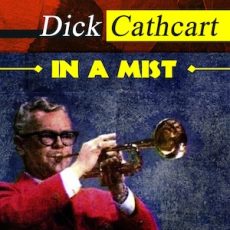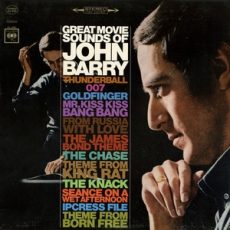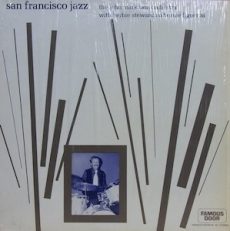
Daily Dose Of Jazz…
Charles Richard Cathcart was born on November 6, 1924 in Michigan City, Indiana. He was a trumpeter for the U.S. Army Air Force Band, and was a member of big bands led by Bob Crosby, Ben Pollack, and Ray Noble.
After World War II he moved to Los Angeles. His friend Jack Webb was playing the part of trumpeter Pete Kelly in the movie Pete Kelly’s Blues and told Cathcart he should supply the music. The band from the movie stayed together in the 1950s for performances and recordings under the name Pete Kelly’s Big Seven.
Cathcart also supplied music for the television show Dragnet, which starred Jack Webb as Joe Friday. He spent much of his career from 1962 to 1968 as a musician on The Lawrence Welk Show. On the Welk show, he met Peggy Lennon, a singer with the Lennon Sisters, and the two married.
Trumpeter Dick Cathcart, who played in both Dixieland and big band genres, died on November 8, 1993 in Los Angeles, California.
More Posts: history,instrumental,jazz,music,trumpet

Daily Dose Of Jazz…
John Barry was born John Barry Prendergast in York, England on November 3, 1933 the youngest of four children, his mother, a classical pianist, his father a projectionist. Raised in and around cinemas, this childhood background influenced his musical tastes and interests. He was educated at St. Peter’s School, York, and received composition lessons from Francis Jackson, Organist of York Minster.
Spending his national service in the British Army playing the trumpet and working from a correspondence course with jazz composer Bill Russo, after his service he worked as an arranger for the orchestras of Jack Parnell and Ted Heath. Forming his own band, the John Barry Seven, in 1957, they recorded hit records on EMI’s Columbia label. By 1959 he gained commissions to arrange music for other acts, and his career breakthrough was the BBC television series Drumbeat, when he appeared with the John Barry Seven.
He was employed by EMI from 1959 until 1962 arranging orchestral accompaniments for the company’s singers. He began composing songs and scores for films and when Adam Faith made his first film, Beat Girl in 1960, Barry composed, arranged and conducted the film score, his first. His music was later released as the UK’s first soundtrack album. His composition and orchestration caught the attention of the Bond producers and he went on to have an accomplished career as a composer and arranger with the series.
In 2001, the University of York conferred an honorary degree on Barry, and in 2002 he was named an Honorary Freeman of the City of York. Fiancial issues in Britain forced him to emigrate to the United States where he lived for many years mainly in Oyster Bay, New York, in Centre Island on Long Island
He suffered a rupture of the esophagus in 1988, following a toxic reaction to a health tonic he had consumed. The incident rendered him unable to work for two years and left him vulnerable to pneumonia.
Composer, arranger and conductor John Barry, who won five Academy Awards and four Grammy Awards with scores for Born Free, The Lion in Winter, Midnight Cowboy and Somewhere in Time, died of a heart attack on January 30, 2011 at his Oyster Bay home, aged 77.
More Posts: arranger,composer,conductor,history,instrumental,jazz,music

Daily Dose Of Jazz…
Christopher Burnett was born in Olathe, Kansas on November 2, 1955 and grew up in a military family that moved often before settling in the Kansas City area. He was exposed to music growing up as his mother introduced him to the piano and he was a member of the youth choir at his church. He took up saxophone and clarinet in his school band. After high school, he enlisted in the U.S. Army Music Program where he performed and pursued higher education, studying at the Armed Forces School of Music, Webster University, Missouri’s Columbia College, Berklee College of Music, and American University.
Spending 22 years in the military, Chris rose to the rank of 1st Sergeant in the position of Enlisted Bandleader, staff and faculty assignment at the Armed Forces School of Music, and the leading Chief Petty Officer of the NATO Band in Naples, Italy. He served as NATO Ceremonial Band Conductor, directed the jazz band, played the lead alto saxophone chair with the West Point Military Academy Band’s Jazz Knights, and a featured soloist with the Hof Symphony Orchestra in Germany.
After leaving the military Burnett continued to teach, holding the position of director of the jazz ensemble program and adjunct lecturer at Missouri University of Science and Technology, formerly University of Missouri-Rolla, where he worked as an Adjunct Lecturer for a decade.
He has performed with artists like Bobby Watson, Will Matthews, Marcus Hampton, Ahmed Alaadeen, and many more. Burnett is the Founder and Artistic Director of KC Area Youth Jazz and along with colleagues Erica Lindsay and Sumi Tonooka is a co-founder of the large independent recording label, Artists Recording Collective.
He has held residencies at the historic Drum Room and the Black Dolphin in Kansas City, and appeared as a guest artist and clinician for the Northwest Missouri State Jazz Festival. He released his debut album as a leader, Time Flies in 2013, Firebird in 2014, in 2021 The Standards, Vol. 1, and Live at The Drum Room in Kansas City in 2022.
More Posts: bandleader,educator,history,instrumental,jazz,music,saxophone

Daily Dose Of Jazz…
John Gordon Markham was born on November 1, 1922 in Oakland, California. After graduating from Piedmont High School he served in the Army during World War II, performing for troops in the Pacific.
A mainstay in countless San Francisco ensembles, John worked with Chuck Travis, Johnny Coppola, and Larry Vuckovich. He worked on the Tennessee Ernie Ford Show in the 49er band and for many years he performed with Jimmy Diamond at the New Orleans Room of the Fairmont Hotel.
He performed and recorded with Charlie Barnet 1950-1952 and then with Billy May 1952-1953. From 1955 mostly working in television, with the occasional tour or recording session. He is noted for his work with many greats, including Frank Sinatra, Benny Goodman, Ella Fitzgerald, Peggy Lee, Bill Perkins, Red Norvo, Vince Guaraldi and other prominent musicians with whom he toured.
Drummer and bandleader John Markham, who led an orchestra under his own name, died October 4, 1998 at the age of 76 years old.
More Posts: bandleader,drums,history,instrumental,jazz,music

Daily Dose Of Jazz…
Theodore Malcolm Nash Sr. was born on October 31, 1922 in the Boston suburb of Somerville, Massachusetts. His goal was to become a classical flutist until he began playing saxophone in his early teens. He started playing professionally when he went on the road with a succession of dance bands. In 1944, he became tenor saxophonist for the Les Brown big band.
The late 1940s had him married and settling in Los Angeles, California where he became an active session musician in the Hollywood movie and television studios. In 1956, he recorded with Paul Weston’s orchestra the album Day by Day, with vocals by his former colleague and close friend, Doris Day.
He was the featured soloist on The Music from Peter Gunn soundtrack, performing the alto saxophone solo on the theme and on the second bridge of Dreamsville. Through the 1950s and 1960s, he worked as a sideman for June Christy, Nat King Cole, Bing Crosby, Billy Eckstine, Ella Fitzgerald, Frank Sinatra, and Nancy Wilson. During the 1970s, he worked with Judy Collins and Quincy Jones.
Retiring in the 1980s, saxophonist, flutist and clarinetist Ted Nash Sr. died on May 12, 2011.
More Posts: clarinet,flute,history,instrumental,jazz,music,saxophone



